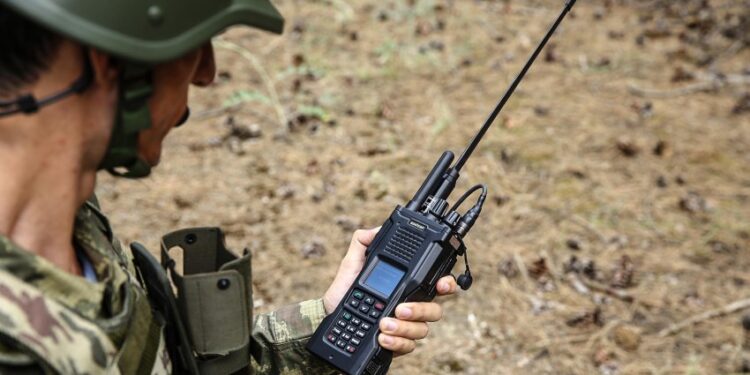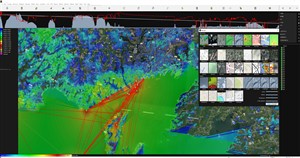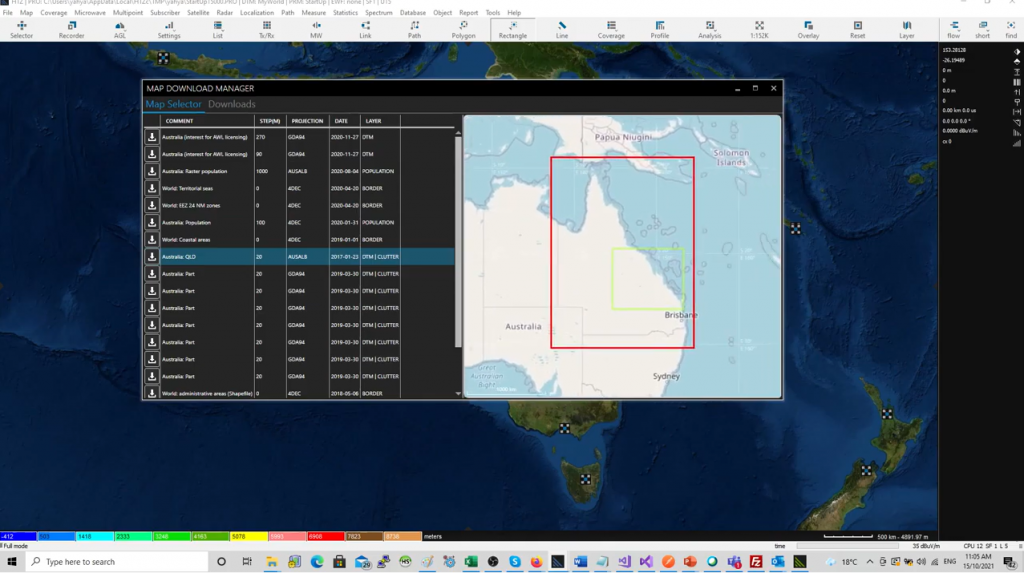Communications Electronic Warfare
#imetrixexperts

#imetrixexperts
ELECTROMAGNETIC SPECTRUM (EMS)
WIRELESS CONNECTIVITY
TACTICAL COMMUNICATIONS
BATTLESPACE SPECTRUM MANAGEMENT
EW SENSORS & JAMMERS
ELECTROMAGNETIC DECONFLICTION
Electromagnetic Spectrum (EMS) is widely used for military operations. Competing demands for radio spectrum means it must be strictly coordinated and controlled. Battlespace spectrum management is the planning, coordination and management of EMS, to enable military systems to perform their functions without causing or suffering from harmful interference. ATDI specialise in electromagnetic deconfliction.
Significant importance is placed on the performance of radio intercept receivers, direction finders and communications jamming equipment. Mission success often relies on the ability to intercept or jam enemy communications. And, to share information with the command structure without undue interference.
HTZ Warfare enables users to exploit spectrum dependant systems, including communication links, electronic warfare sensors, radio jammers and radar detection.

With over three decades of development, ATDI is a leading military network planning and EW modelling specialist. We develop feature-specific software for military units around the World. These solutions allow military units, defence and security agencies to support the design of communication networks, including the ability to minimise interference, assign frequencies and generate alternative communication plans.
Key product features include:
HTZ warfare removes the complexity of calculations in the field and simplifies the user experience intuitively across a wide range of applications, including:



5G networks offer increased capacity, lower latency and faster speeds. They can operate in the higher frequency bands between 28GHz and 60GHz. This range is known as the millimetre wave (mmWave) spectrum. 5G networks feature a dense, distributed network of base stations or small cells. 5G networks offer ultra-reliable, low latency capacity, as a result of increased processing, which supports emerging user applications.
Small cells in 5G networks support the increased data capacity and can reduce network rollout costs by eliminating expensive rooftop installations. 5G networks need built-in flexibility to coexist with other standards like LTE & Wi-Fi and to support spectrum sharing.
Due to the high-frequency bands used for 5G, accurate cartographic data is needed to take into account the terrain, clutter heights and building which may impact the service, network latency and capacity. ATDI offers a comprehensive library of map data, available for download hhttps://atdi.com/map-downloads/. These high-resolution maps support signal loss modelling which is characterised in the geo-spatial environment and identifies buildings and clutter that will impact mmWave propagation.
5G networks offer three distinct use cases for industry, each offering its own distinct benefits to users, communities and industry as a whole.
Demand for faster data rates and improved capacity for end-users is driving the growth of services in urban and rural areas. Networks need to focus on enhancing the user experience through easy connectivity and access 24/7. eMBB is used to support high speed internet access, improved broadband connectivity, video streaming and gaming, and higher capacity rates in densely populated areas such as cities, large scale events and stadiums.
Every industry looks to technology to provide cost savings, and the telecom industry is no different. 5G supports the growth of IoT for applications in health, transport, utilities, mining, oil and gas and more. These industries demand reliable, high-capacity networks which are scalable. mMTC supports smart city initiatives (see BAI Communications), autonomous/connected vehicles, smart metering, smart agriculture and asset monitoring.
These networks offer seamless reliability which, to date, has not been achieved with previous mobile technologies. This reliability allows emergency service network and mission-critical communications to be supported on a new level. Developments in this field support innovative applications including automation across industries like smart factories, automated mines, automated vehicles, remote healthcare and immersive virtual reality experiences.
View our 3-part 5G network planning webinar.
Often technology advancements and deep pockets win wars. However, good communication networks in the battlespace can be the difference between military success or failure. Nowadays, ministries of defence are compelled to assess their radio spectrum use to ensure their spectrum management practices reap maximum benefits.
Defence & security communications have been an integral part of ATDI since its outset. The scope of this work ranges from auditing the use of military spectrum to advising and supporting studies on coexistence, releasing spectrum for commercial use and the reallocation of spectrum for reuse with other technologies.
HTZ Warfare offers dedicated features for the defence and security markets including:
HTZ Warfare supports all technologies and functions for the defence and security markets, including:
Check out how Drones are used in the military and defence sectors.
HTZ Communications
As the use of drones or unmanned aircraft (UAV) grow, businesses and Governments are seeing significant demand and growth in areas like transport, military, logistics and commercial sectors.
Drones are controlled by a ground control system (GSC) which operates remotely or autonomously. Wireless connectivity lets pilots view the drone and its surroundings from a birds-eye perspective. Users can also leverage apps to pre-program specific GPS coordinates and create an automated flight path for the drone.
The data links use a radio-frequency (RF) transmission to transmit and receive information to and from the UAV. These transmissions share information like location, distance and location to target, distance to the pilot, payload information, airspeed, altitude and more. An autonomous drone can conduct a safe flight without the intervention of a pilot.
HTZ Communications offers dedicated features for drone management including:
HTZ Warfare
In the defence and security sector, UAVs are used as target decoys, for combat missions, research and development. Their growing use has reduced losses in the field and enables the execution of high profile and time-sensitive missions.
Anti-drone systems are used to detect or intercept unwanted unmanned aerial vehicles. More often, anti-drone technology is deployed to protect areas like airports, critical infrastructure, large public spaces and military installations and battlefield sites.
Counter-drones are used to jam the signal between the drone and drone pilot.
Check out our Counter-drone demo today.
Electromagnetic Spectrum (EMS) is widely used for military operations. Competing demands for radio spectrum means it must be strictly coordinated and controlled. Battlespace spectrum management is the planning, coordination and management of EMS, to enable military systems to perform their functions without causing or suffering from harmful interference.
Significant importance is placed on the performance of radio intercept receivers, direction finders and communications jamming equipment. Key features that determine the success of a mission is the ability to intercept or jam enemy communications. And similarly, to share information with the command structure without undue interference.
With over three decades of development, HTZ Warfare is a leading military network planning and EW modelling tool. This feature-specific software supports military units around the World. Key functions include:
HTZ warfare removes the complexity of calculations in the field and simplifies the user experience intuitively across a wide range of applications, including:
Check out our BSMS company presentation.
Modelling all radio communications technologies between 8KHz and 1THz
Modelling all radio communications technologies between 8KHz and 1THz
Modelling all radio communications technologies between 10KHz and 350GHz

Combining Medium & High-resolution maps into one layer

Protecting military radars from 5G interference

Anti-drone networks

Sharing tactical information in the field


Εγγραφείτε στην επικοινωνία της
i-metrix για να μαθαίνετε πρώτοι τις προσφορές και τα νέα μας.
E-mail: info@i-metrix.gr
T: +30 210.300 2050
Ad: 20-22 Tzortz st. | Athens | GR